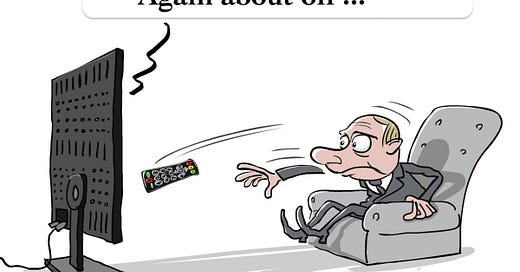At a glance, the situation with oil and gas revenues in the Russian budget has noticeably improved in March-April: The “bottom” was passed in January, after which the growth of revenues began, and some analytics predict Minfin may receive even more revenues in May and start to refill its fiscal reserves. However, my closer look reveals a less-rosy picture.
The main thing to remember is that a significant part of March and April revenues consisted of the tax on additional income (TAI), paid once every three months. Deducted of TAI, the mineral extraction tax on oil and gas condensate and the export duty on oil and petroleum products in April were in line with the average for the previous four months, December-March. Because the next TAI payment is due in July, there will objectively be less oil and gas revenues for the budget in the next two months.
Of course, some factors are pushing revenues up. A devaluation of the ruble and changes in the rules for determining the “Minfin’s price” have led to a marked increase in the ruble price of export oil (the basis for calculating taxes), as can be seen in the chart. “Tweaking” the legislation by Minfin expanded the tax base for oil production and reduced payments to refineries as part of the policy of holding down domestic prices for petroleum products.
However, we should not forget that Russia again “shot itself in the foot” and reduced oil production in April by 5% compared to February levels; besides, the Russian army needs not only ammunition but also petroleum products—after the mobilization, 7%-8% of automotive fuel, mainly diesel, goes for military needs, which inevitably reduces crude exports.
My forecast for the year is unchanged: the law predicts the budget to receive 8 trillion rubles in “basic” oil and gas revenues and another trillion above that level1. To reach these targets, in the remaining eight months, the treasury should receive 6.7 trillion rubles—i.e., 840 billion rubles per month, which seems incredible to me with the current level of oil prices and the dollar exchange rate. In my estimation, it will be a big success for the Ministry of Finance if it gets 100% of the “basic” amount of oil and gas revenues.
However, this does not mean that at the end of the year, “Putin will run out of money for the war”: Due to the ruble’s devaluation since the beginning of the year, the size of the liquid part of the government’s “piggybank,” the National Welfare Fund increased by 1.25 trillion rubles, coinciding with the additional oil and gas revenues the Finance Ministry wanted to receive but will not. And do not forget that the Russian ruble today is a non-convertible currency. The Central Bank and the government have potent tools in their hands to manage it: It is enough to allow foreign investors to repatriate a couple of billion dollars from Russia so that the dollar’s rate rises by 1 ruble, after which 900 billion additional rubles will appear in the “piggybank.”
9 trillion rubles ($117 bln. at today’s exchange rate) represent 34.4% of the overall revenues projected for the Russian federal budget in 2023.





